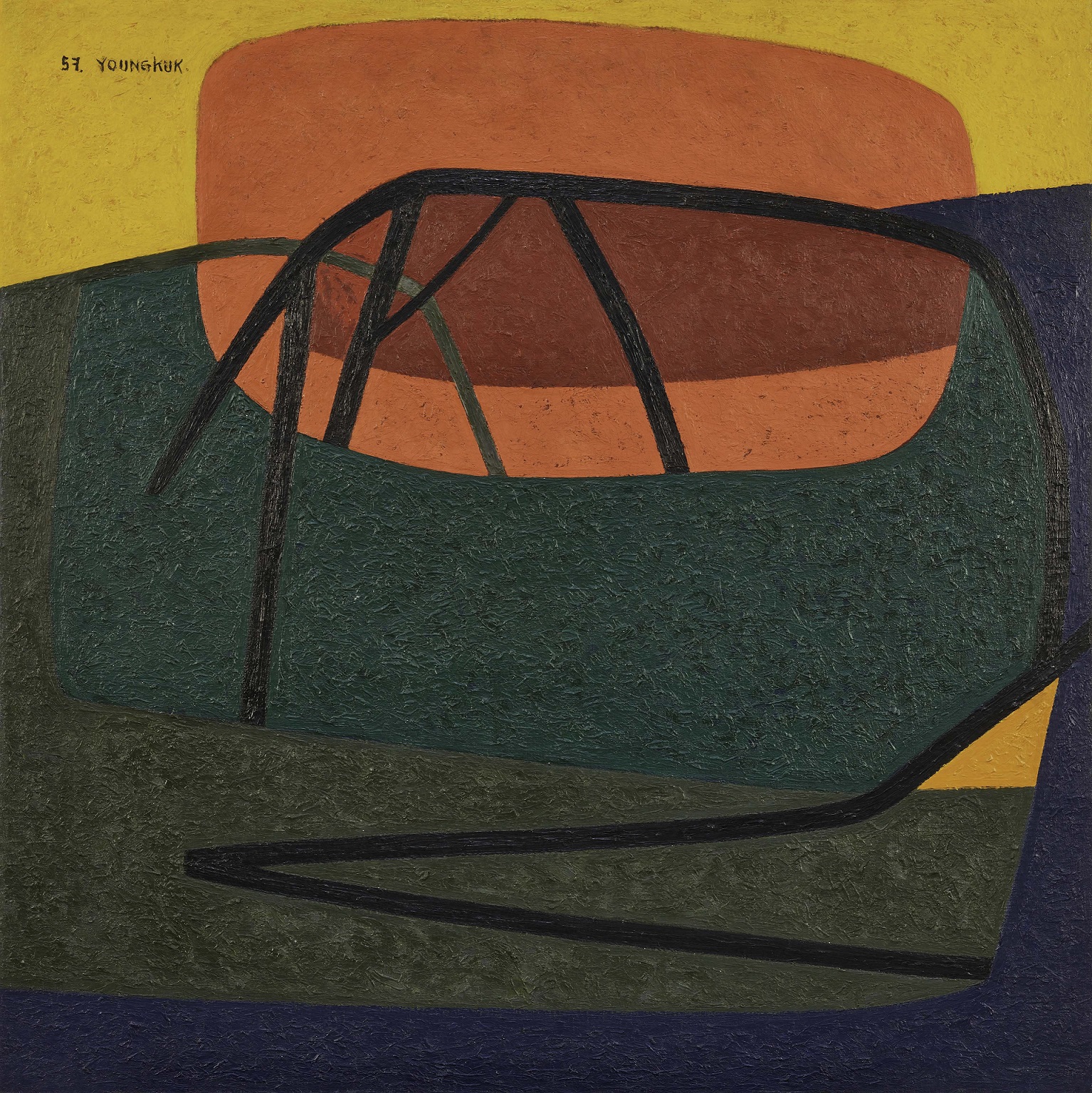
Yoo Youngkuk, Work, 1957, Oil on canvas, 101×101cm. MMCA collection
Yoo Youngkuk
* Source: Multilingual Glossary of Korean Art. Korea Arts Management Service
Related
-
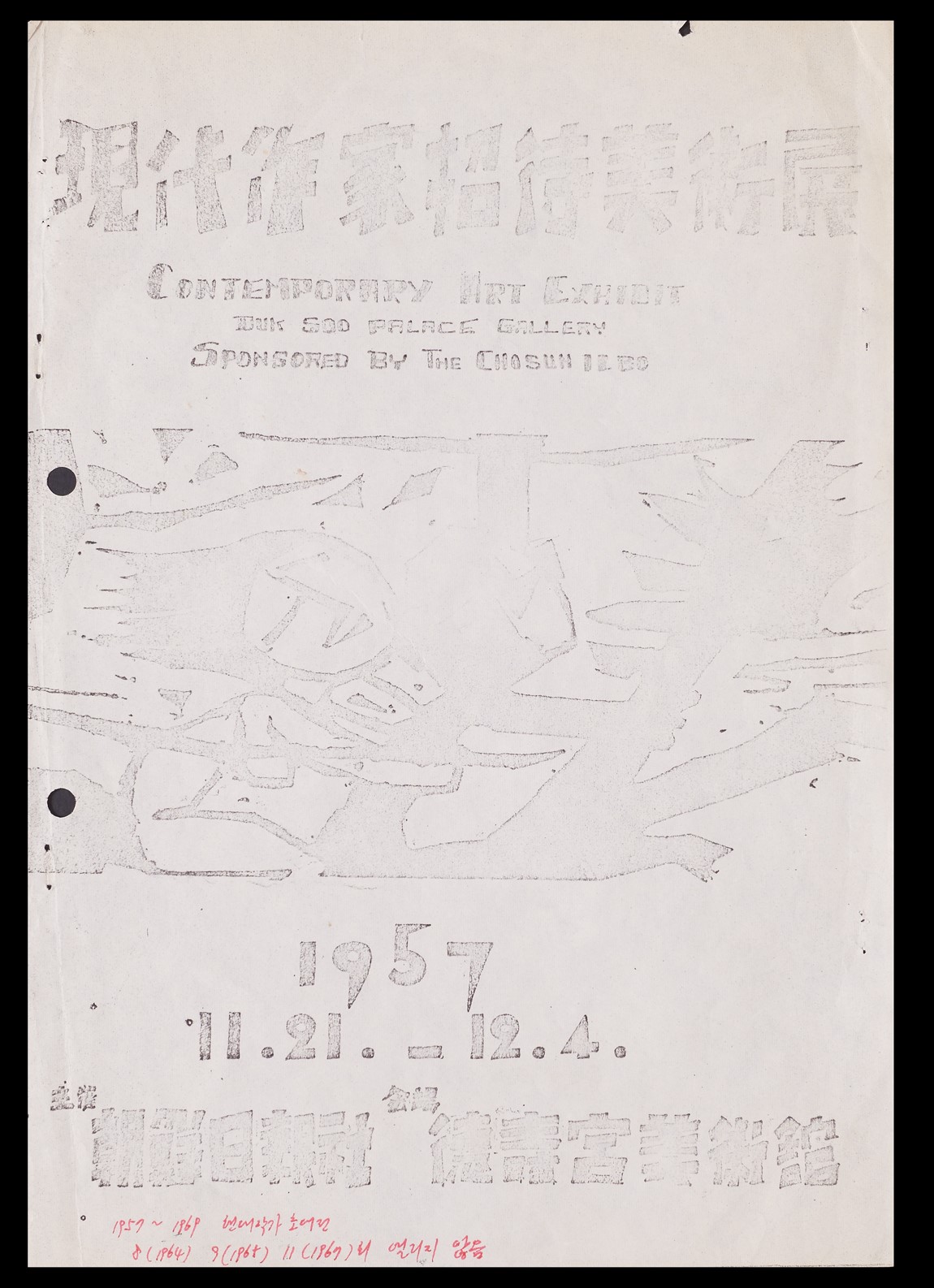
Contemporary Art Exhibit
An exhibition held from 1957 to 1969 by Chosun Ilbo. Two artists, Kim Byungki and Kim Youngjoo, and a reporter at the Chosun Ilbo Culture Desk, Han Bongdeok, participated in the establishment. The invitational united independent artists that resisted the authority of the establishment and triggered the emergence of Anti-academicist exhibition, minjeon. The invitational also contributed to the spread of Informel Abstractionism in the late 1950s and early 1960s. The first exhibition, held in 1957, featured 20 Western-style artists, and from the fifth exhibition, held in 1961, the invitational accepted submissions from not yet established artists. In the following year, 11 artists were invited from overseas to take part in an international exhibition, and in 1963, the invitation of an Academicist artist raised controversy. The invitational was discontinued after this 13th exhibition in 1963.
-
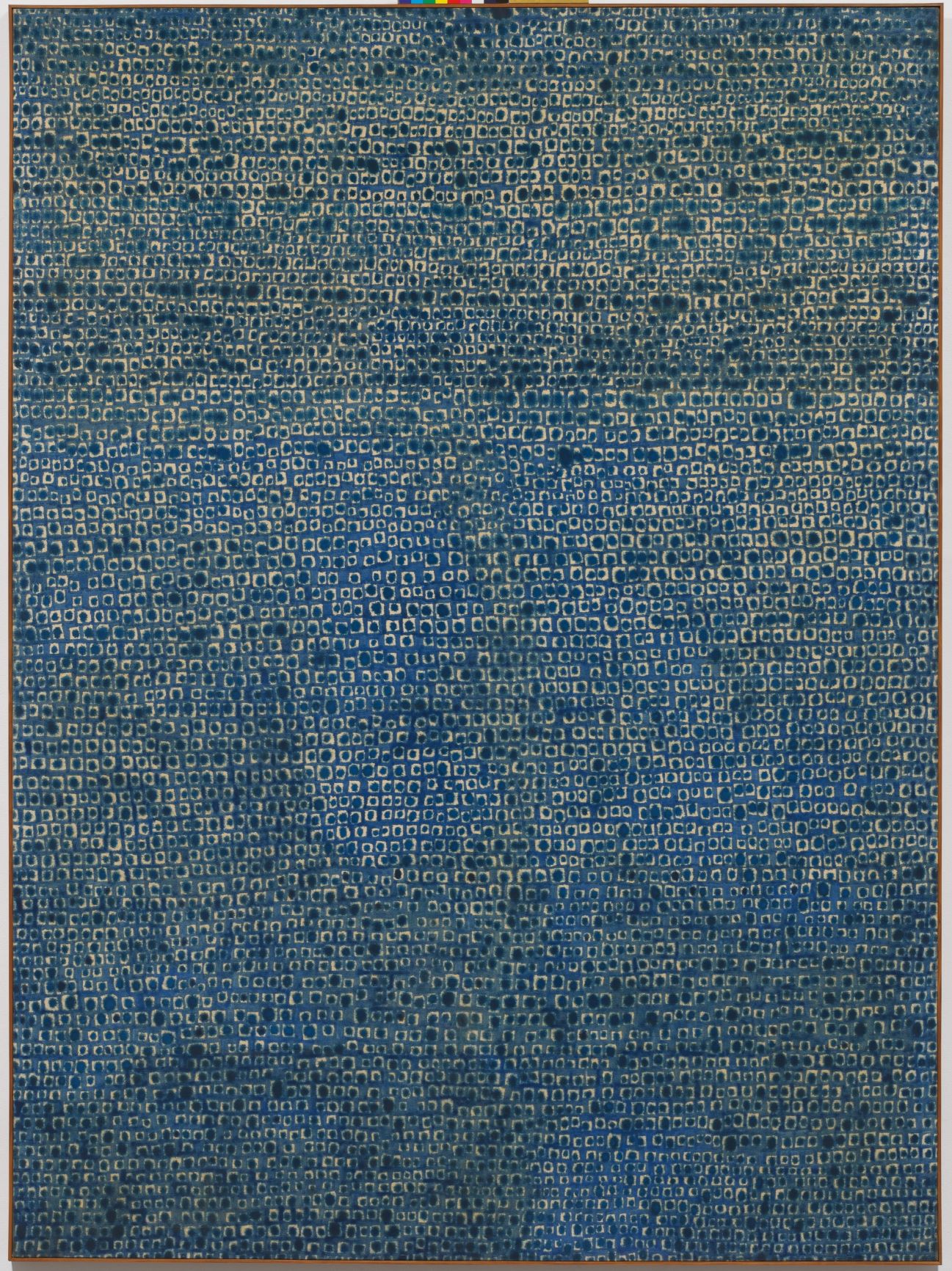
Abstract art
A term which can be used to describe any non-figurative painting or sculpture. Abstract art is also called non-representational art or non-objective art, and throughout the 20th century has constituted an important current in the development of Modernist art. In Korea, Abstract art was first introduced by Kim Whanki and Yoo Youngkuk, students in Japan who had participated in the Free Artists Association and the Avant-Garde Group Exhibition during the late 1930s. These artists, however, had little influence in Korea, and abstract art flourished only after the Korean War. In the 1950s so called “Cubist images,” which separated the object into numerous overlapping shapes, were often described as Abstractionist, but only with the emergence of Informel painting in the late 1950s could the term “abstract” be strictly used to describe the creation of works that did not reference any exterior subject matter. The abstract movements of geometric abstractionism and dansaekhwa dominated the art establishment in Korea in the late-1970s. By the 1980s, however, with the rising interest in the politically focused figurative art of Minjung, abstraction was often criticized as aestheticist, elitist, and Western-centric.
-
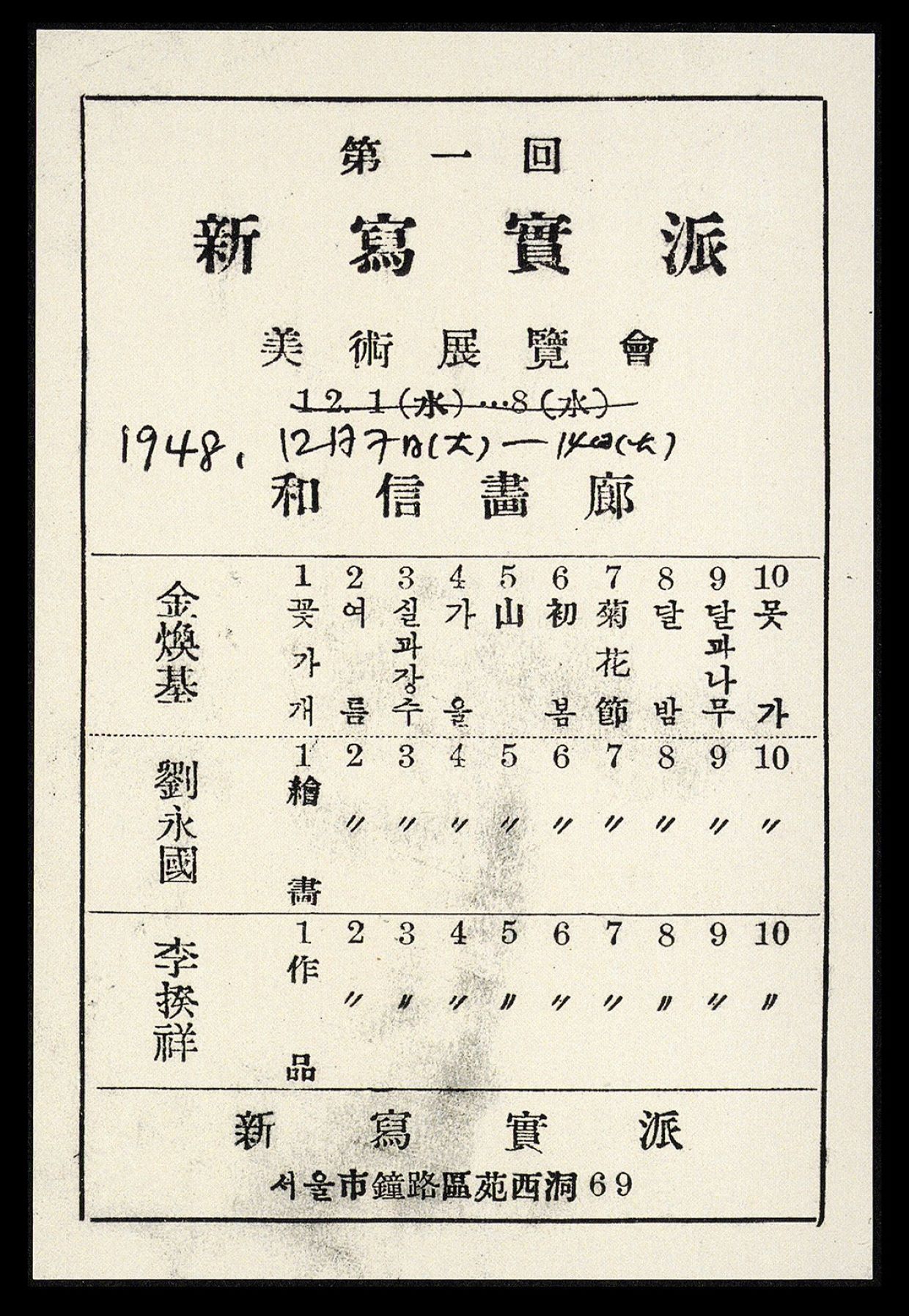
New Realism Group
The New Realism Group [Sinsasilpa] was a group of abstract artists, such as Kim Whanki, Yoo Youngkuk, and Lee Kyusang, who, through their work sought to represent the conceptualization of a pure Plasticism. One of the most influential groups in Korean modern art, the name “New Realism Group” was created by Kim Whanki. This originated from his foundational idea that the artists of the group should pursue new types of realistic painting. Since they considered that all forms, including abstract ones, ultimately belong to experiential reality, the ambition of the group was to contribute to the perception of a “new formation of reality”. Their inaugural exhibition was held at Hwashin Department Store's gallery from December 7th to 14th, 1948. Chang Ucchin then joined the group for the second exhibition, followed by Lee Jungseop and Paek Youngsu for the third. They disbanded the group after the third exhibition, which was staged at the temporarily relocated National Museum in Busan from May 26th to June 4th, 1953. The works of the New Realism Group navigated a path between figuration and non-figuration through the deployment of abstract expressionist idioms, while also making use of visual elements taken from nature, everyday life, and real-life materials. The New Realism Group were pioneers of a new style of Korean abstract art, one which they realized as an attempt to create a new artistic perspective that could exist outside the pervasive right-left ideological struggle that defined the politically, economically, socially, and culturally unstable Cold War period of Korea. A retrospective exhibition for the group was held at the Won Gallery from September 23rd to 30th, 1978, and a sixtieth commemorative exhibition was held at the Whanki Museum from November 9th in 2007 to January 13th, 2008.
Find More
-
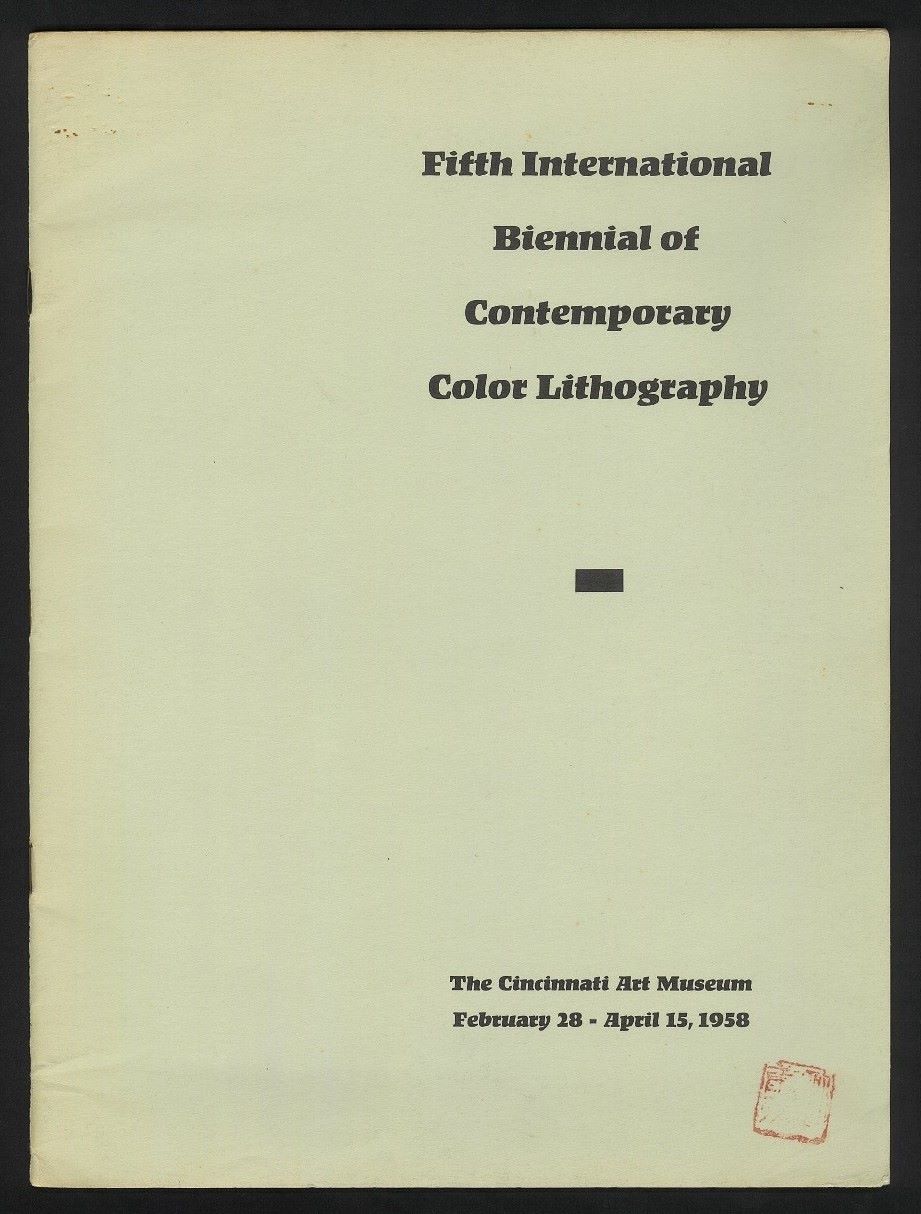
International Biennial of Contemporary Color Lithography
The International Biennial of Contemporary Color Lithography was an international print exhibition held from 1950 through 1960 by the Cincinnati Art Museum in Ohio in the U.S. At the time, there was a printmaking boom in the U.S. sparked by the relocation of Atelier 17, a notable Parisian printmaking studio, to New York in 1940. In the 1950s and 1960s, the International Graphic Arts Society (IGAS) was founded, and several special exhibitions on prints were held, including New Expressions in Fine Printmaking: Ideas, Methods, and Materials (Brooklyn Museum, 1952). In addition, institutions for exploring printmaking, such as Pratt-Contemporaries Graphic Arts Center, Tamarind Lithography Workshop, and Universal Limited Art Edition (ULAE), were built. Under these circumstances, Gustave von Groschwitz, a curator of prints at the Cincinnati Art Museum from 1947 to 1963, organized the first biennial of color lithographs in the U.S. Only works created within two years could be submitted to the biennial, allowing two prints per artist. Korean artists had participated in the biennial since 1958. Yoo Kangyul, Kim Choungza, Choi Dukhyu, Kim Sou, Rhee Sangwooc, and Lee Hangsung took part in the fifth edition in 1958. Their participation in the biennial led to the acquisition of some works by the Cincinnati Art Museum. They were Face and Pagoda by Kim Sou, Winter by Rhee Sangwooc, and Silhouette and Buddha’s Spirit by Lee Hangsung. This marked the first overseas debut of contemporary Korean prints. In the sixth edition held in 1960, Mountain Sentiment and Revival by Lee Hangsung and Study by Bae Yoong won prizes. Starting in 1962, the International Biennial of Contemporary Color Lithography was held as a triennial and renamed International Prints.
-
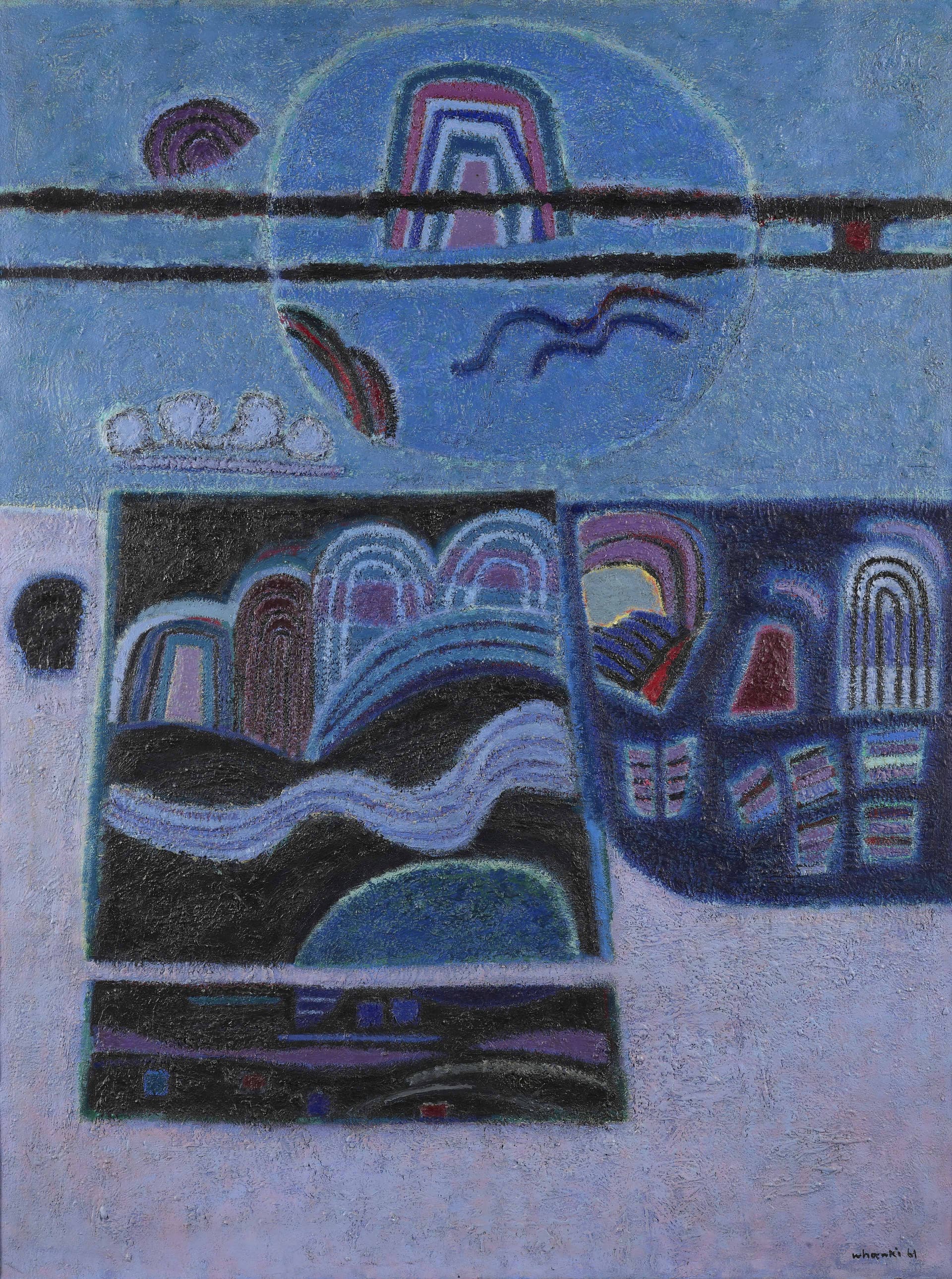
Kim Whanki
Kim Whanki (1913-1974, pen name Suhwa) was born in Sinan, Jeollanamdo, and his family origin was from Gimhae. He studied at the Department of Fine Arts at Nihon University, Tokyo, Japan from 1933 to 1936. He joined the Avant-Garde Western Art Institute in 1934 and submitted his work to Avant-Garde art associations, such as the Second Division Exhibition Nikaten (Nika Art Exhibition) and the Exhibition of the Free Artists Association (Jiyu Bijutsuka Kyokai). After independence, he organized the New Realism Group and worked as a professor in the Department of Fine Art at Seoul National University (1946-1950) and Hongik University (1952-55). He lived in Paris from 1956 to 1959, and after his return, he became a professor and later the Dean of the Fine Art College at Hongik University (1959-1963). He participated in the seventh Sao Paulo Biennale and won an honorary award, and then moved to New York. He abruptly passed away while having a solo exhibition at Poindexter Gallery, New York, ironically when his career in the US was at its peak. As a pioneer of Korean abstract art, he started by working in geometric abstraction and moved on to semi-abstract work that featured natural motifs such as the mountain, the moon, and the river. After moving to the U.S., he returned to abstraction with his so-called "dot paintings." His painting 16-Ⅳ-70 #166 Where, in What Form, Shall We Meet Again? (1970), was awarded a grand prize at the Korean Art Grand Award Exhibition and has inspired many contemporary Korean artists. His work Rondo (1938) was selected as No. 535 within the national Registered Cultural Properties.
-
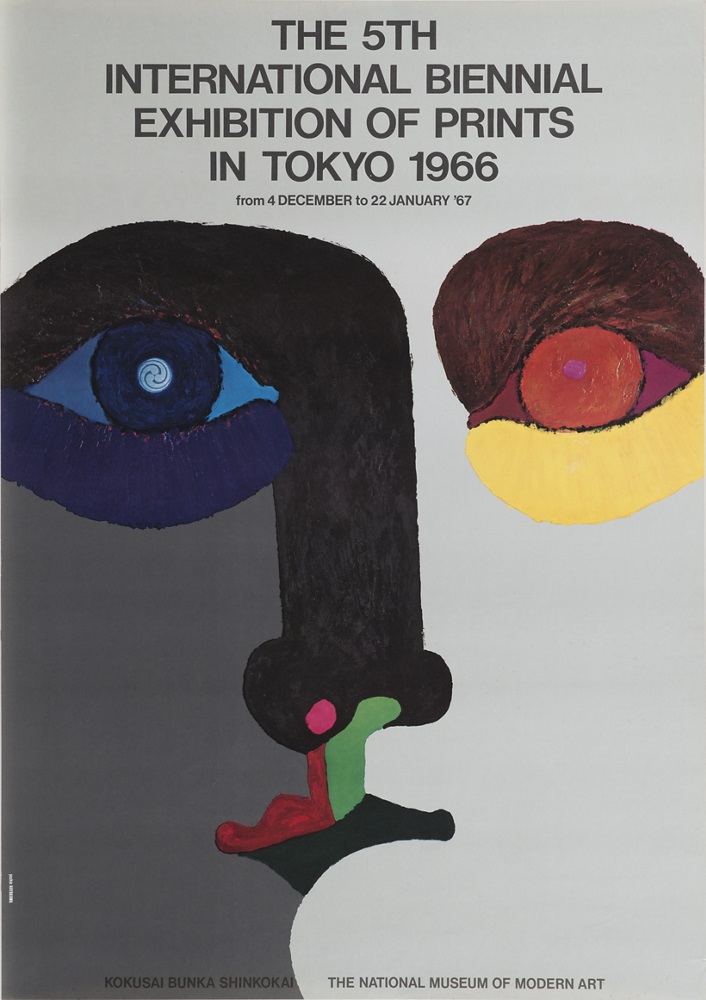
International Biennial Exhibition of Prints in Tokyo
The International Biennial Exhibition of Prints in Tokyo was an international print exhibition held in Japan eleven times from 1957 through 1979. Initially, it was co-hosted by The National Museum of Modern Art, Tokyo and The Yomiuri Shimbun newspaper company. In the fifth edition, the International Cultural Promotion Association (Kokusai bunka shinkōkai) replaced The Yomiuri Shimbun, strengthening the nature of cultural exchange. Over twenty-two years, a total of 1,317 artists (1,098 foreign artists and 219 Japanese artists) participated in the International Biennial Exhibition of Prints in Tokyo, with approximately 3,000 works submitted. The International Biennial Exhibition of Prints in Tokyo is one of the international exhibitions in which a large number of Korean artists took part. This is partly owing to geographical proximity, but active exchanges with Japanese art circles in the 1970s also encouraged their participation. Korean artists consistently participated from the fifth edition to the eleventh. Yoo Kangyul, Kim Chonghak, and Youn Myeungro joined the fifth edition (1966); Bae Yoong, Suh Seungwon, and Ahn Dongguk, the sixth edition (1968); Kim Tchahsup, Ha Chonghyun, and Lee Ufan, the seventh edition (1970); Kim Sangyu, Kim Tschang-yeul, and Kwak Duckjun, the eighth edition (1972); Lee Ufan, Kim Kulim, and Chung Chanseung, the ninth edition (1974); Lee Kangso, the tenth edition (1976); and Suh Seungwon, Shim Moonseup, Kwak Duckjun, Chin Ohcsun, and Lee Ufan, the eleventh (1979). Among these participating artists, Kim Chonghak received an honorable mention in the fifth, and Kwak Duckjun won the Minister of Education Award in the eighth. In the eleventh, Chin Ohcsun won the Minister of Foreign Affairs Award and Lee Ufan won the Kyoto National Modern Art Award. In the eighth, the art critic Lee Il participated as an international judge. The International Biennial Exhibition of Prints in Tokyo exerted a considerable influence upon the development of Japanese contemporary prints and played a role in anchoring prints in the postmodern discourse of “de-genre” and “de-media” in conjunction with contemporary art. Witnessing the interest in prints not just from Japanese art circles but also from the international art community through the exhibitions, Korean artists became more interested than ever in prints, which emerged as a major medium of expression in contemporary art. Since the 1970s, there has been a significant increase in the number of artists working in printmaking.






